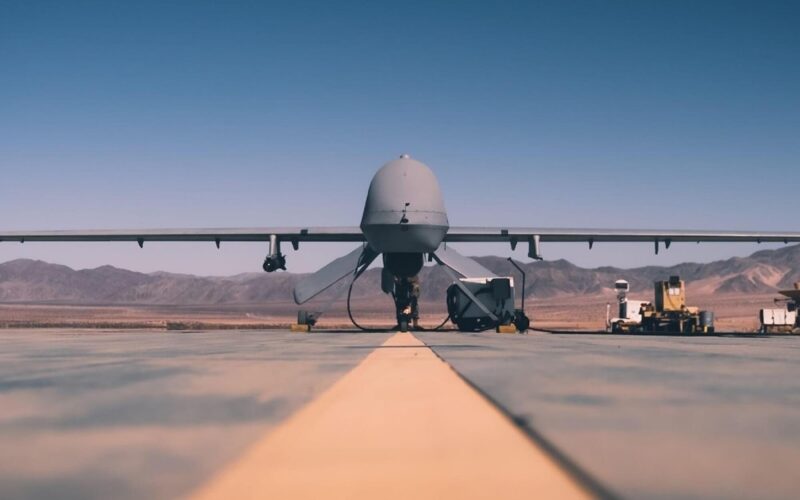A group of 16 US senators are demanding that the Biden administration justify the deadlock in delivering Gray Eagle armed drones to Ukraine.
In an open letter to Secretary of Defense Lloyd Austin, the bipartisan group led by Republican Joni Ernst and Democrat Joe Manchin asked that the decision be explained, specifically the risks identified by the US Department of Defense (DoD), by November 30, 2022.
In early June 2022, reports said that the DoD was considering the sale of four MQ-1C Gray Eagle Medium Altitude Long Endurance Unmanned Aerial Systems (UAS). The Gray Eagle is based on the MQ-1 Predator unmanned aerial system developed by General Atomics.
However, on June 17, 2022, Reuters reported that the plans had met with concerns that they may create a security risk for the United States, especially if the drones were to fall into enemy hands. The technology associated with the aircraft’s radar and surveillance equipment was judged particularly sensitive.
“According to reports, the Defense Technology Security Administration identified risks with the MQ-1C Gray Eagle related to sensitive technology transfer,” the senators said in their letter. “Specifically, what are the risks and how can they be mitigated? […] How did DOD evaluate the survivability of the platform, including in comparison to other armed UAS systems in the conflict?”
The lawmakers also asked to detail the risk of conflict escalation identified by the DOD.
Why is the MQ-1C Gray Eagle drone important for Ukraine?
Ukraine already operates a variety of drones, from loitering munitions to the Turkish Bayraktar TB2.
The TB2 specifically has proved effective in the fight against invading Russians and was credited for helping to sink the Russian missile cruiser Moskva and bombing Russian anti-air defense systems on Snake Island.
However, the capacities of the Turkish drone are lesser when compared to its US competitors.
Because of its line-of-sight communication, the TB2 range is limited to around 300 kilometers (190 miles) around its ground control station. This means that the UAS cannot carry strikes deep into enemy territory. It has a service ceiling of 18,000 feet (5,500 meters.)
The Bayraktar TB2 can use 150-kilogram (330-pound) offensive payload, divided onto four hardpoints, which includes a range of Turkish-made laser-guided missiles, bombs, and rockets.
In comparison, the MQ-1C Gray Eagle has the possibility to be operated via satellite communications, offering it a range of over 4,500 kilometers (2,800 miles). It is uncertain, however, that Ukraine would be able to take advantage of that feature.
The Gray Eagle can carry AGM-114 Hellfire air-to-ground missiles and GBU-44/B Viper Strike guided bombs for a total payload of nearly 500 kilograms. Its operational altitude of 29,000 feet (8,800 meters) also gives it higher survivability.
The Ukrainian armed forces do not currently employ the MQ-1, meaning that its operation would require training.
A long-time request from Ukraine
The idea of supplying General Atomics drones was raised very early into Russia’s invasion of Ukraine. In April 2022, Ukraine officials met with representatives of the manufacturer to negotiate the potential acquisition of Reaper and Predator armed drones.
In early November 2022, General Atomics told the defense publication Janes that it was ready to supply combat drones from the MQ-9 family to Ukraine. The MQ-9 Reaper is a larger and heavier successor to the MQ-1 Predator on which the Gray Eagle is based.

